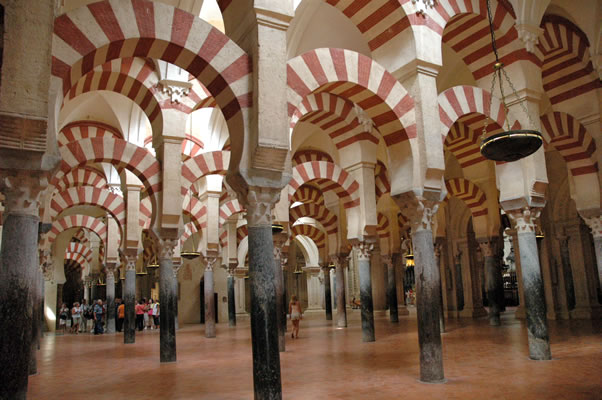Want to learn about the Spanish Arabic civilization? Read ahead to discover the depth and extent of the Spanish Arabic civilization…
Long before the European Renaissance the Arabs established a huge civilization in Spain. The Spanish Arabic civilization dates back to 711 when Spain was conquered by the Muslim Arabs under Tariq Bin Ziyad.
While the Islamic rule of the Spanish peninsula lasted for only 28 years in the Northwest, in the Galicia region it spanned over 781 years around Granada in the southeast.
Establishment of Arab Rule in Spain
The Arabs went on to rule the country for over 700 years and transformed it from the Dark Ages to an enlightened center of culture and commerce. In the Spanish Arabic civilization art, science and commerce thrived for centuries. There was immense tolerance among the society members.
The Arabs entered Europe from the South and one of the survivors of the family of the Caliph of the Arabian empire Abd Ar Rahman I became the first Caliph of Al-Andalus which was the Muslim or Moorish side of Spain, covering most of the Iberian Peninsula.
Under his supervision the Umayyad Dynasty was established and lasted for 300 years. In fact the modern name of Andalusia is derived from this name which translates into ‘the land of the vandals’.
Impact of Arabs on the Spanish Arabic Civilization
Initially Spain was part of the medieval ages but as the Spanish Arabic civilization progressed, this region became a bastion of commerce, culture and immense beauty. The progressive irrigation systems which were successfully utilized in Arabia and Syria were established in this country.
This allowed Arabs to create more plantations in which olives and wheat crops thrived. They introduced coriander, bananas, henna, sugarcane, figs, rice, grapes, cotton, saffron, almonds, apricots as well as cumin and lemon, pomegranate, oranges and aubergines.
The capital city called Córdova was the gem in the crown of the Spanish Arab civilization. While the rest of Europe was living in mud huts this city was home to 113,000 houses for the population of half a million locals and Moors.
There were more than 700 mosques along with 300 baths opened to the public. Every street was paved well in this town with 21 suburbs. The beautifully structured houses had marble balconies for the hot summer months while being equipped with hot air ducts underneath the mosaic tiled floors to keep the houses warm in winter.
Most of the houses were decorated with gardens and orchards which had artificial fountains dotting them. Paper which was unknown to the west was found everywhere in the bookshops and more than 70 libraries existed in this area.
Tolerance in the Spanish Arabic Civilization
A lot of religious tolerance was witnessed in this area because of this a large number of Christian and Jewish communities thrived under the Arab rule of Spain.
This is mainly because Islam clearly dictates that monotheistic faiths have to be tolerated and their followers cannot be persecuted under Islamic law.
The restrictions applied to the construction of synagogues as well as churches and members of other faiths had to pay a special tax known as Jizya while the Muslims had to pay compulsory Zakat. These are both considered wealth taxes implemented by the rule of God to benefit those in need and circulate wealth.
Of course there were some instances of judicial misrepresentation but overall the large majority of people lived in peace. This led to more and more locals converting to Islam. Spanish Arab culture is reminiscent to this day of this grand civilization that bears testimony to the splendor and glory of the post Islamic Arab world.





